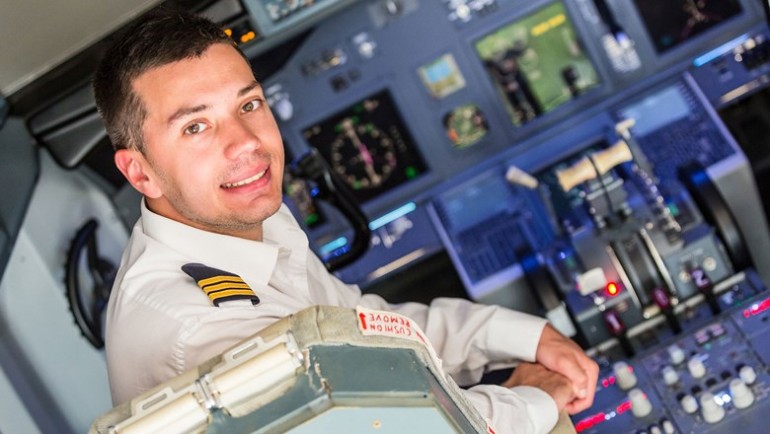Sponsored Listings:
LONG BEACH, Calif. — The regional airline industry, which has thus far felt most of the effect of a growing commercial pilot shortage, pressed its case last week for new exceptions to the controversial 1,500-hour training rule.
And buoyed by remarks from acting FAA administrator Dan Elwell, industry officials left the Regional Airline Association (RAA) Annual Conference with a sense that relief could be on the way.
“I’m very encouraged by acting administrator Elwell’s comments of support today,” Republic Airline CEO Bryan Bedford, who is also the RAA chairman, told reporters at a Sept. 25 briefing. “Clearly, we’ve got the best minds in the industry globally here in the United States. We can come up with better ways to train pilots for the future.”
At issue for the RAA is the 1,500-hour rule, which went into effect in 2013, increasing six-fold the minimum flight time required to co-pilot a commercial flight. Exceptions are allowed for military pilots, who must have 750 hours; graduates of qualified bachelor’s degree aviation programs, who must fly 1,000 hours; and graduates of qualified associate degree aviation programs, who must have 1,250 hours.
The 1,500-hour rule has become a focus of sharp political debate as a result of the pilot shortage. According to the University of North Dakota’s 2016 Pilot Supply Forecast, the U.S. faces a looming shortage of 3,500 commercial pilots by 2020. The long training regimen is a major barrier to entry, opponents of the rule say, and can cost in the $200,000 range to complete.
Regional airlines say the pilot shortage has already been a leading cause of contraction in their industry. SkyWest CEO Chip Childs said at the conference, “Even today, I think regionals would be flying more aircraft if we had more pilots.”
Over the past nine years, the overall seat count in the U.S. airline industry has increased 14.5%, Bedford said in a state-of-the-industry address at the conference. Meanwhile, the seat count on regional airline flights has dropped 4.5%.
Regionals — including Republic, SkyWest, ExpressJet, Endeavor, Mesa, PSA and Envoy, to name some of the larger carriers — do most of their flying under the branding of Delta Connection, American Eagle, United Express and, to a lesser extent, Alaska. And though the industry has shrunk in recent years, regional airlines are still the only type of carrier to fly into 63% of commercial U.S. airports, according to the RAA.
So far, the pilot shortage has brought casualties to weak regional airlines. Notably, Great Lakes Airlines cited the shortage when it halted operations this spring. So did SeaPort Airlines when it closed in 2017. Other regionals have cited the shortage as they made network cuts, and in 2016 and 2017, Republic, which is the second-largest U.S. regional airline, used a chapter 11 bankruptcy proceeding to force contract concessions from American, Delta and United that helped it deal with the pilot shortage.
The University of North Dakota and regional airline executives expect the shortage to peak in 2022 or 2023, as more pilots at major airlines reach the mandatory retirement age of 65.
The RAA and other stakeholders have called for alternatives to the 1,500-hour rule and have said that targeted training, including more work in flight simulators, can be more effective than merely requiring lots of flight hours. Under the current regulation, aspiring pilots can only apply 50 simulator hours to the 1,500-hour count.
Reforms to the 1,500-hour rule have been consistently opposed on safety grounds by the Air Line Pilots Association (ALPA) and by the relatives of the 49 people who perished on Colgan Air’s Flight 3407, which crashed into a house on approach to Buffalo Niagara Airport in 2009, killing all 49 passengers and crew as well as one person on the ground.
Last month, in conjunction with an aviation workforce symposium hosted by the FAA, the ALPA offered a plan to address the pilot shortage calling for improved access to federal student loan programs for aspiring pilots as well as funding and promotional help to get more veterans and women into commercial cockpits. The plan did not reference the 1,500-hour rule.
Nevertheless, in a Q&A session at the RAA convention, Elwell said he was open to creating new exceptions to the rule if the data shows that alternative training programs would be more effective.
Elwell said he spoke with the Colgan families last month at the aviation workforce symposium and told them he would make no promises not to change the 1,500-hour rule, or any other rule, for that matter.
“I told them that safety has never been static, and our efforts with safety have never been static,” he said.
At a panel about pilot training at the RAA conference, a group of five flight trainers made the case for greater use of simulators in the training of U.S. pilots.
Simulators, panelists noted, allow trainees to practice all sorts of scenarios that they could never practice in the sky due to the danger element.
John Allen the chief safety officer for JetBlue, said the carrier has data showing that flight simulator training can provide as much skill in 200 to 300 hours as the trainees can get in 1,500 hours of flying under the current system.
The panelists referenced Multicrew Pilot License training, a standard developed in 2006 by the International Civil Aviation Organization, which can be earned with just 240 hours of combined flight and flight simulator time. The training, which has been adopted by a number of airlines in Europe and Asia, including Lufthansa, is geared toward teaching the competencies needed for multipilot commercial jetliner flying.
“Airplanes don’t crash now because of the hydraulic system,” said Michael Dee, Republic’s flight training director. “Airplanes crash now because the people in the cockpit don’t talk to one another.”
Source: travelweekly.com










